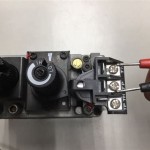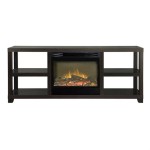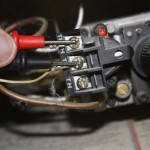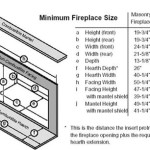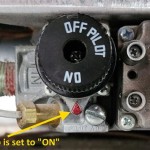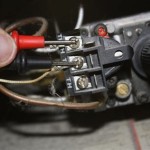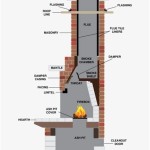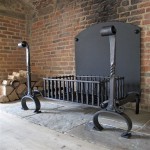Freestanding Wood Fireplaces: A Comprehensive Guide
Freestanding wood fireplaces, also known as wood stoves, offer a distinct alternative to traditional masonry fireplaces. They provide efficient heating, aesthetic appeal, and the flexibility to be installed in various locations within a home. Understanding the different types, features, installation requirements, and safety considerations is crucial for anyone considering a freestanding wood fireplace.
Types of Freestanding Wood Fireplaces
Freestanding wood fireplaces come in several configurations, each with its own advantages and disadvantages. Categorization can be based on fuel type, construction material, or burning technology. Differentiating between these types helps prospective buyers select the most appropriate solution for their needs.
Cast Iron Stoves: These are typically known for their classic aesthetic and radiant heat. Cast iron stoves gradually absorb heat and then radiate it outward into the room. They are durable and can last for many years. However, they can take longer to heat up compared to steel stoves and are generally heavier, making installation more challenging.
Steel Stoves: Steel stoves offer faster heat-up times due to steel's greater thermal conductivity. They are often lighter than cast iron stoves, and modern steel stoves can be designed with sleek, contemporary aesthetics. Steel stoves can be more prone to warping or damage from overheating compared to cast iron, especially models using thinner steel.
Hybrid Stoves: Some manufacturers combine cast iron and steel in their wood stoves, leveraging the strengths of both materials. This may involve a cast iron exterior for radiant heat and durability combined with a steel firebox for quicker heat-up. These hybrid models often offer a balance between performance and aesthetics.
Catalytic Stoves: These stoves use a catalytic combustor to reduce emissions and increase efficiency. The combustor helps burn off smoke and gases that would otherwise escape up the chimney. This results in cleaner burning and more heat extracted from the wood. Catalytic stoves typically require more maintenance and careful operation to ensure the combustor functions correctly.
Non-Catalytic Stoves: Non-catalytic stoves rely on advanced firebox designs and air injection systems to achieve cleaner burning. They use secondary combustion to burn off gases without a catalytic combustor. These stoves are generally simpler to operate and maintain than catalytic models but may not achieve the same level of efficiency or emission reduction.
Pellet Stoves: While technically not "wood" stoves in the traditional sense, pellet stoves burn compressed wood pellets. These pellets offer a more consistent fuel source with lower moisture content. Pellet stoves use automated feeding systems and thermostats for precise temperature control. They typically require electricity to operate and need a dedicated venting system. While efficient and convenient, they lack the aesthetic appeal of a traditional wood-burning fire.
Key Features and Considerations
Beyond the basic types, numerous features influence the performance, safety, and usability of a freestanding wood fireplace. Assessing these features is crucial for selecting a model that meets specific requirements.
Heating Capacity: Heating capacity, measured in BTUs (British Thermal Units), indicates the amount of heat a stove can produce. The required BTU output depends on the size of the area to be heated, the insulation levels of the building, and the climate. Overestimating can lead to overheating and discomfort, while underestimating will result in inadequate heating. Manufacturers provide BTU ratings for their stoves, but it's important to consult a professional to determine the appropriate size for the specific application.
Firebox Size: The size of the firebox determines the length of logs that can be burned. A larger firebox allows for longer burn times and reduced refueling frequency. However, a larger firebox may also require more wood to maintain a consistent fire. Choosing the right firebox size depends on individual heating needs and the availability of appropriately sized firewood.
Airwash System: An airwash system directs a stream of air across the inside of the glass door, keeping it clean and providing a clear view of the fire. This feature enhances the aesthetic appeal of the stove and reduces the need for frequent cleaning of the glass. An effective airwash system significantly improves the user experience.
Burn Time: Burn time refers to the length of time a stove can burn on a single load of wood. Longer burn times reduce the need for frequent refueling, especially overnight. Burn time is influenced by firebox size, stove design, and the type and quality of wood used. Manufacturers typically provide estimated burn times, but actual burn times may vary depending on operating conditions.
Emissions Standards: Regulatory agencies, such as the Environmental Protection Agency (EPA), set emissions standards for wood stoves. These standards aim to reduce air pollution from wood burning. When selecting a wood stove, it's important to choose a model that meets current EPA standards. Look for an EPA certification label on the stove. Older, uncertified stoves can produce significantly more emissions and may not be legal to install in some areas.
Draft Control: The ability to precisely control the airflow to the fire is essential for efficient burning and safety. Draft controls allow the user to adjust the intensity of the fire and the burn rate of the wood. Proper draft control prevents overfiring, which can damage the stove and chimney, and ensures that the fire burns cleanly and efficiently.
Construction and Materials: The quality of construction and the materials used in a wood stove directly impact its durability and lifespan. Look for stoves made from heavy-gauge steel or high-quality cast iron. Welds should be strong and consistent. The door should fit tightly and seal properly to prevent air leaks. A well-constructed stove will provide years of reliable service.
Ash Removal System: An efficient ash removal system simplifies the process of cleaning out the ashes from the firebox. Some stoves have simple ash pans, while others have more sophisticated systems that allow for ash removal without interrupting the fire. The ease of ash removal is an important consideration for long-term maintenance.
Installation and Safety Requirements
Proper installation is paramount for the safe and efficient operation of a freestanding wood fireplace. Incorrect installation can lead to fire hazards, carbon monoxide poisoning, and other safety risks. It is highly recommended to employ a qualified professional for the installation process.
Clearances to Combustibles: Wood stoves generate significant heat, and it is crucial to maintain adequate clearances to combustible materials, such as walls, furniture, and flooring. Manufacturers specify minimum clearance requirements in the stove's installation manual. These clearances are intended to prevent the combustible materials from overheating and potentially catching fire. Using heat shields can reduce clearance requirements in some cases.
Floor Protection: Wood stoves must be installed on a non-combustible floor protector. This protector shields the floor from embers and radiant heat. The size and type of floor protector are typically specified in the stove's installation manual and are dependent on the stove's design and testing. Acceptable floor protectors include concrete, brick, tile, or specially designed stove boards.
Chimney and Venting: A properly sized and installed chimney is essential for venting combustion gases safely and efficiently. The chimney must be compatible with the type of stove being used and must meet local building codes. It's crucial to choose a chimney with the correct diameter and height to ensure adequate draft. Regular chimney inspections and cleaning are essential to prevent creosote buildup, which is a major fire hazard.
Carbon Monoxide Detectors: Carbon monoxide (CO) is a colorless, odorless, and deadly gas produced by incomplete combustion. It is essential to install carbon monoxide detectors in any home where a wood stove is used. Detectors should be placed near sleeping areas and on each level of the home. Regularly test the detectors to ensure they are functioning properly.
Proper Wood Storage: Store firewood in a dry, well-ventilated area away from the house. Wet or damp wood burns inefficiently and produces more smoke and creosote. Stack the wood in a manner that allows for air circulation. Allow the wood to season (dry) for at least six months before burning. Properly seasoned wood will burn hotter and cleaner.
Operating Guidelines: Follow the manufacturer's operating guidelines for the stove. Avoid overfiring the stove, which can damage components and create a fire hazard. Use only approved fuels, such as seasoned firewood. Never burn treated wood, painted wood, or other materials that can release harmful toxins. Regularly inspect the stove and chimney for any signs of damage or wear.
Permits and Inspections: Before installing a wood stove, check with the local building department to determine if any permits are required. Many jurisdictions require inspections to ensure that the installation meets safety standards. Obtaining the necessary permits and inspections can help prevent problems in the future and ensure that the stove is installed safely and legally.
By understanding the different types of freestanding wood fireplaces, considering key features, and adhering to proper installation and safety guidelines, homeowners can enjoy the benefits of efficient heating and the aesthetic appeal of a wood-burning fire, while minimizing potential risks.

Freestanding Wood Burning Stoves Sierra Hearth And Home

Wood

How To Buy A Wood Stove Buyer S Guide From Regency

Wood

What Is A Freestanding Wood Stove Fireplace Service Experts

Freestanding Wood Burning Stoves Hearth And Home

Studio 2 Freestanding Wood Burning Stove Stovax Stoves

Suspended Fashion Indoor Freestanding Wood Burning Stove China Weather Resistant Fireplaces Made In Com

Free Standing Wood Stoves Royal Fireside Mendon Ma

Buy Regency Package Cascades Wood Stove F2500 Or In

